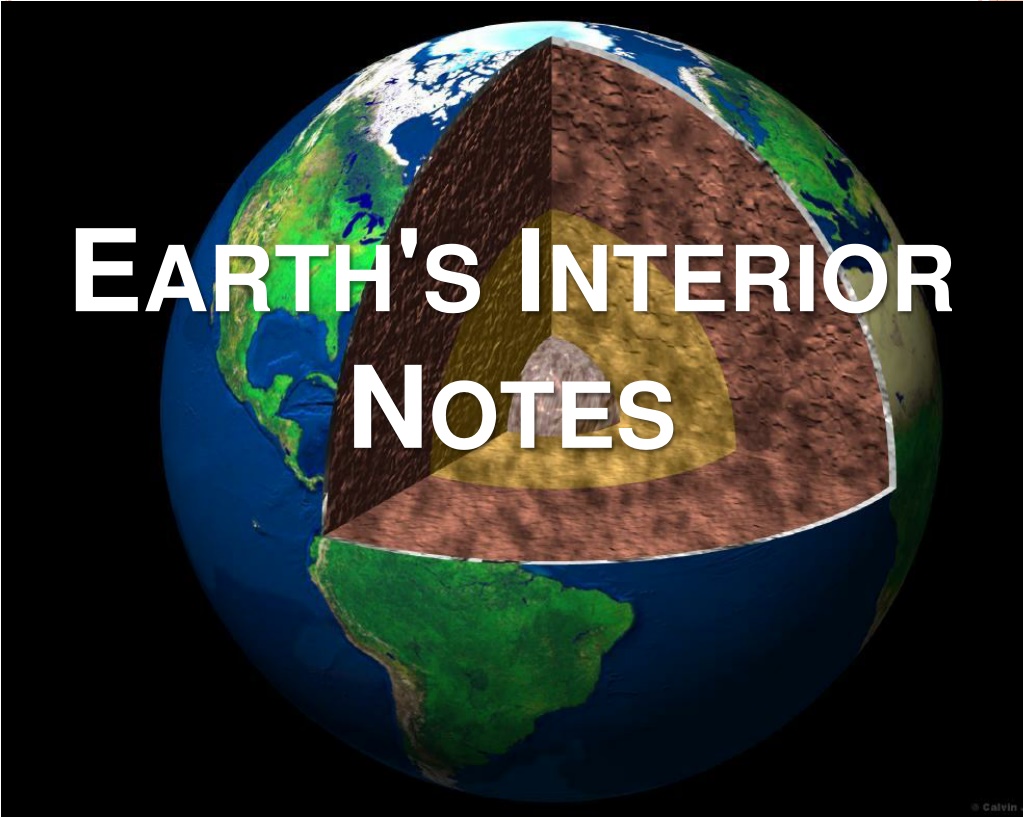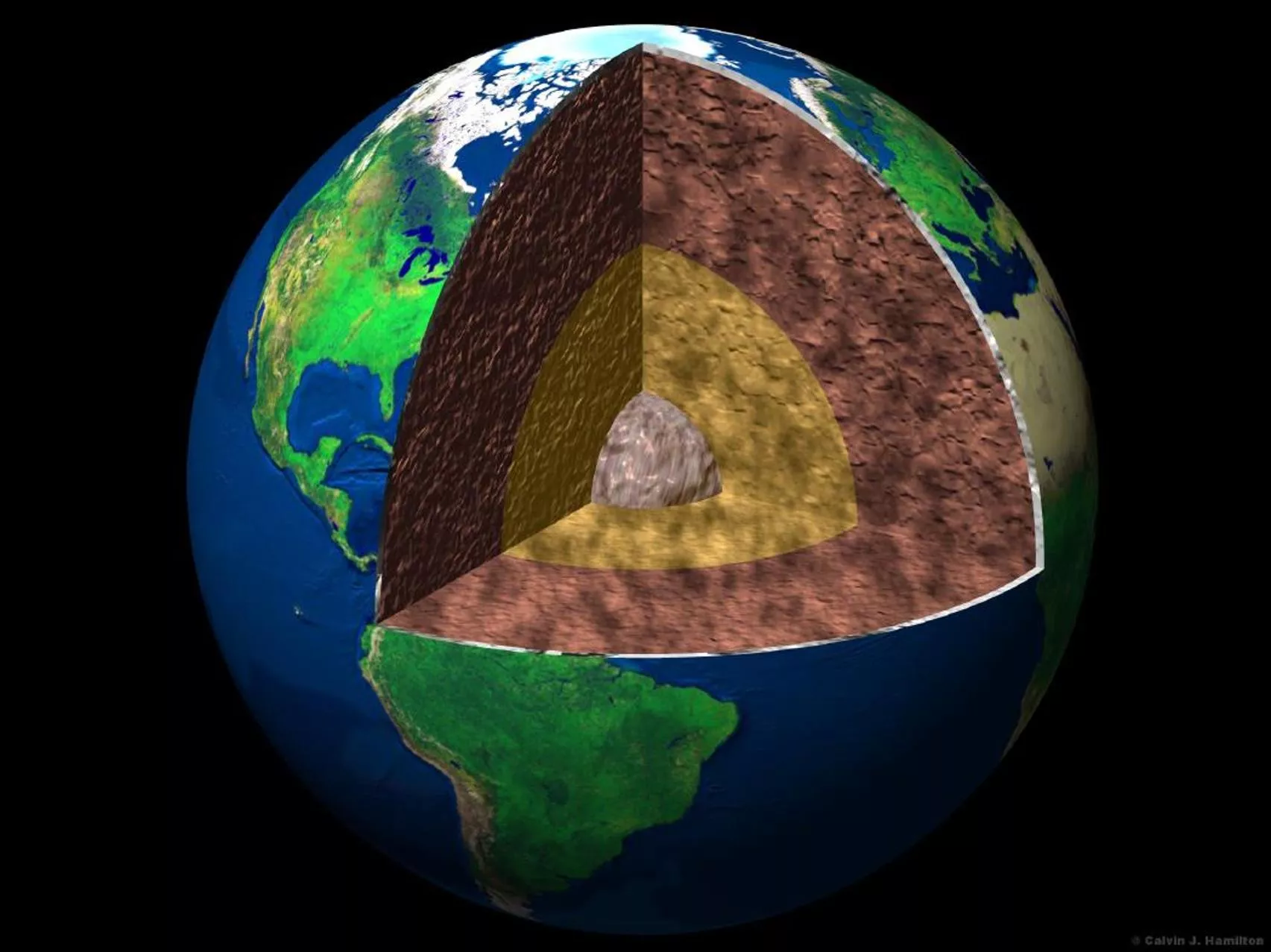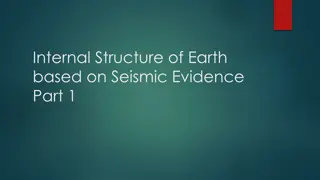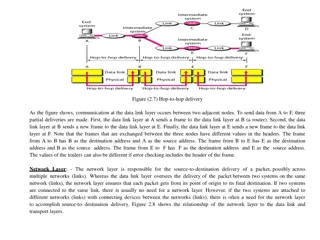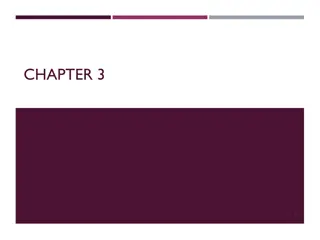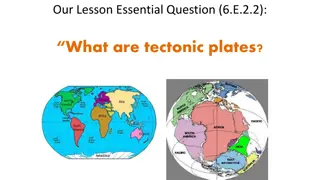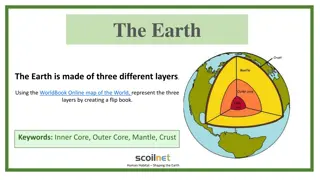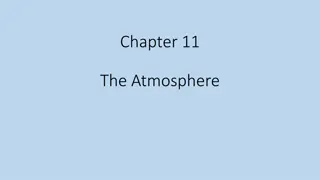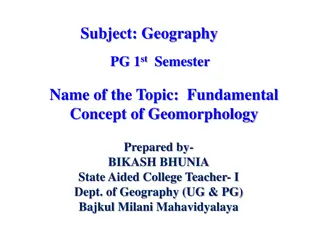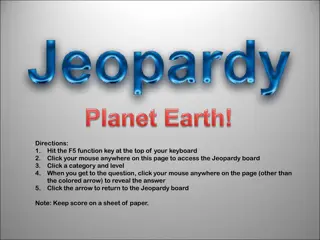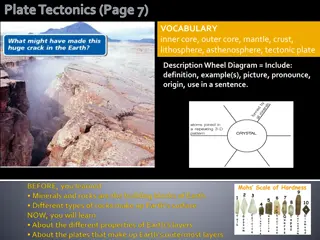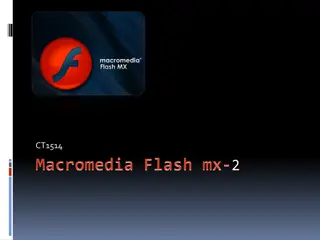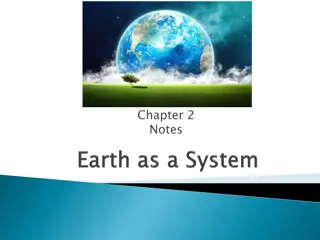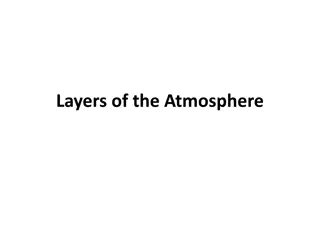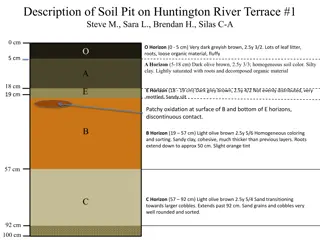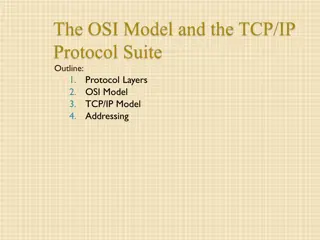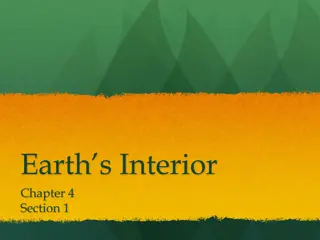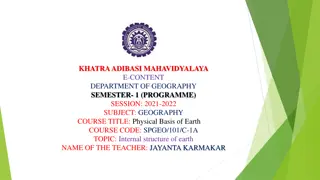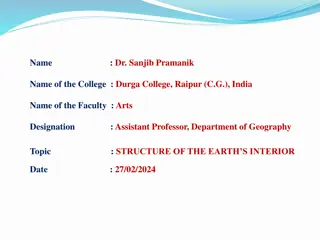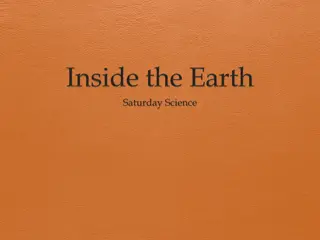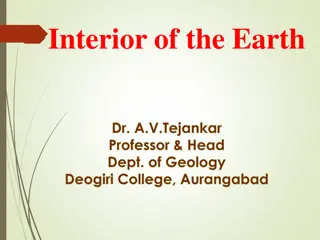Discovering Earth's Layers and Structure
Explore the intriguing composition of Earth's interior, including the layers such as the crust, mantle, outer core, and inner core. Learn about tectonic plates, continental drift, and the concept of Pangaea. Delve into the depths of the Earth and understand the materials that make up each layer through detailed descriptions and visual representations.
Download Presentation

Please find below an Image/Link to download the presentation.
The content on the website is provided AS IS for your information and personal use only. It may not be sold, licensed, or shared on other websites without obtaining consent from the author.If you encounter any issues during the download, it is possible that the publisher has removed the file from their server.
You are allowed to download the files provided on this website for personal or commercial use, subject to the condition that they are used lawfully. All files are the property of their respective owners.
The content on the website is provided AS IS for your information and personal use only. It may not be sold, licensed, or shared on other websites without obtaining consent from the author.
E N D
Presentation Transcript
EARTH'S INTERIOR NOTES
EARTHS LAYERS VOCABULARY Inner core a ball of hot solid metal at the center of the earth Outer core liquid layer of metal that surrounds the inner core Mantle earth s thickest layer between the outer core and crust made of magma
Crust the top layer of earth made of a thin layer of cool rock Lithosphere the layer of earth made of the crust and the rigid rock of the upper mantle which is broken into tectonic plates Asthenosphere the layer in earth s upper mantle directly under the lithosphere in which rock is soft and weak because it is close to melting
Cross-Section of the Layers of the Earth
Tectonic plates the process in which the motion of a hot material under the crust changes the crust of the Earth. These are called plate tectonics Continental drift a hypothesis that Earth s continents move on the surface Fault lines a crack in Earth s surface
Pangaea a hypothetical supercontinent in which all continents were once attached. It began breaking apart about 200 million years ago Convection a process by which energy is transferred to cause warmer less dense air or liquid to rise while the dense cooler liquid or air is pushed down.
Data Table Depth Name of Layer What Layer is Made Of 20 km crust solid rock, mostly granite and basalt 150 km asthenosphere (mantle) soft slow flowing material 2,000 km mantle hot, but liquid material 4,000 km outer core molten iron and nickel 6,000 km inner core solid iron and nickel
Outer core Earth s Crust Mantle Inner core
